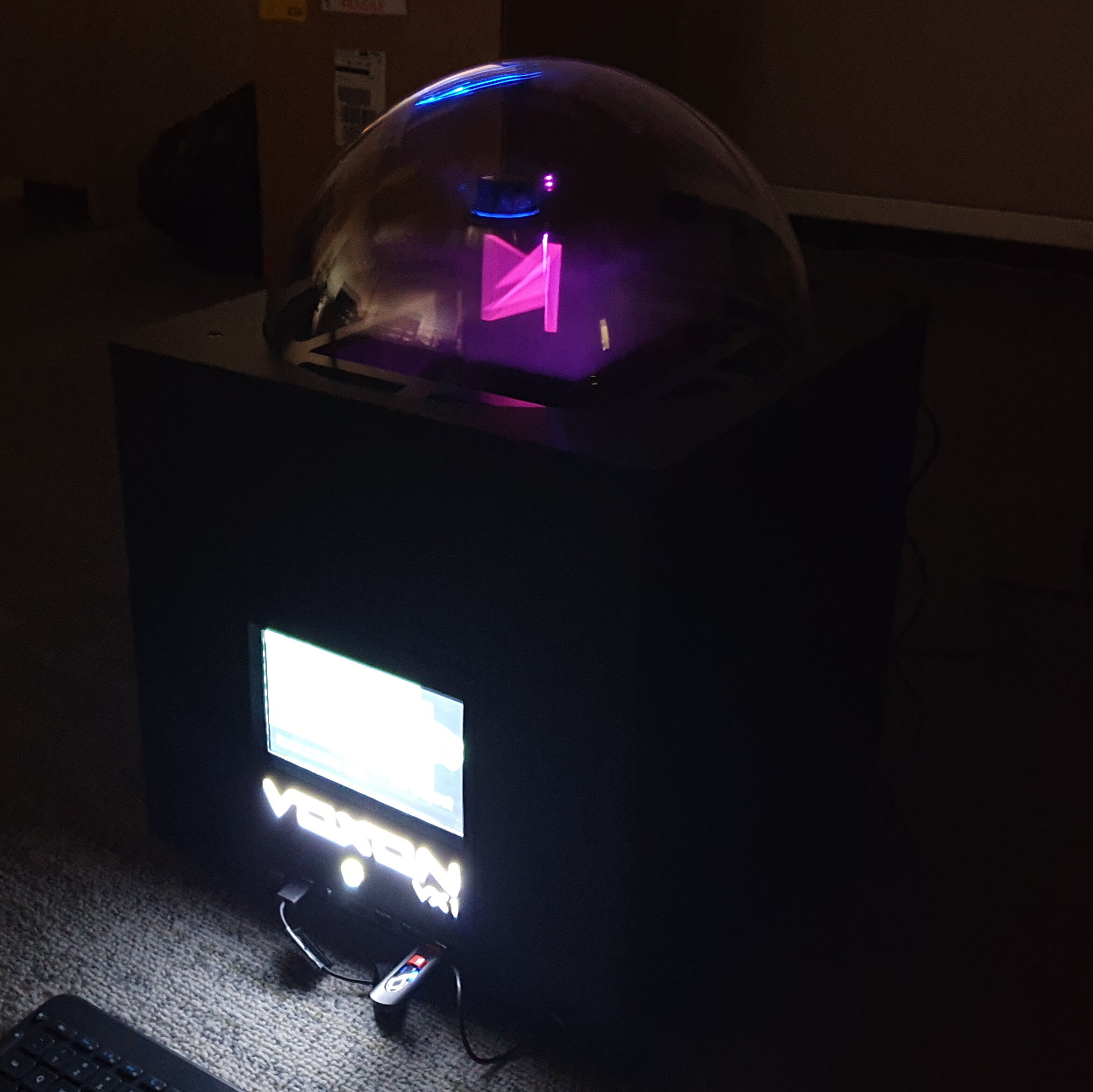VolTech
The Voxon VX1 Machine, displaying our team logo
Project Overview: VolTech is a team of interdisciplinary artists, designers, programmers, and engineers from CMU’s Entertainment Technology Center exploring the potential of cutting edge holographic displays. Taking cues from science fiction and the work of creators before us, we look ahead to envision the future use cases and real-world applications of holographic technology. Feel free to check out our team’s blog here.
My Role: Interaction & Hardware Designer / Co-Producer
Project Duration: 16 Weeks (Spring 2020)
Platform: Voxon VX1
Project Goal: to uncover the best practices for designing virtual experiences that work within the constraints and take advantage of the unique features of the 360° volumetric display unit, experimenting with a variety of techniques and technologies to increase immersion and interactivity.
Project Trailer
Our work was recognized by the company that created the VX1 @ 1:39
What Did I Do?
A playtester interacting with the machine via a VR Headset, whose movement is sent to the machine. On the right is a 360 camera, which gets added to the skybox of the vr experience, giving the playtester the feeling of being “honey I shrunk the kids” into the machine
Interaction / Hardware Design
As Interactive Designer, my goal was to focus on how people would interact with this new technology, and how to make that interaction as intuitive and magical as possible.
Perhaps my favorite part of this project was layering other technology on top of the VX1, to create intuitive interactions. The VX1 came with a 3D mouse, which our team found unintuitive and frustrating to use. By the end of the semester, we ended up testing the interactions of: an Xbox controller, a Leap Motion, Smart Phones, a VR headset with a 360 camera, and an Emotiv Headset. Ironically, for our final prototype, we ended up using the 3D mouse, because we found it worked well as a 2D joystick for our Crane Prototype.
My job was to design for, set up, and program for the interaction devices so that they would be intuitive, robust, and interesting. I programmed mostly in C#, through Unity (as that was the engine we used to create experiences for the VX1). For the smart phones, I worked in the Android Development system, creating mobile apps that connected to the machine via a simple client-server network.
Co-Producer
As Co-producer, I worked closely with the other co-producer on the team to help manage timelines, communication with stakeholders, and provide support to the rest of the team.
Us fixing a broken part on the machine
Challenges and Learnings
We had many setbacks throughout the semester, including shipping delays, which caused us to receive the machine 2 months into the semester; a broken part, whose replacement needed to be express shipped from Australia (where the machine is manufactured); and Covid-19, which forced our university to go remote, and only one teammate could have access to the machine. This last setback was possibly the hardest to work around, as it is really an in-person medium, and needs to be experienced in all it’s 3D, volumetric glory.



